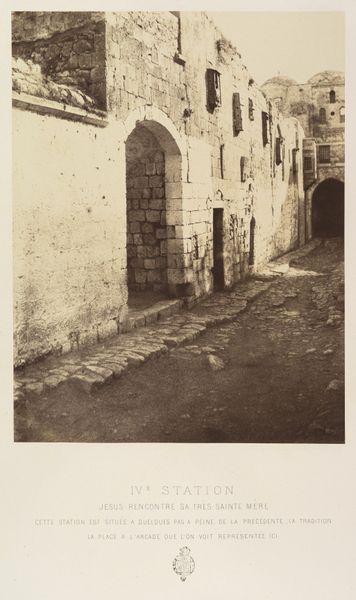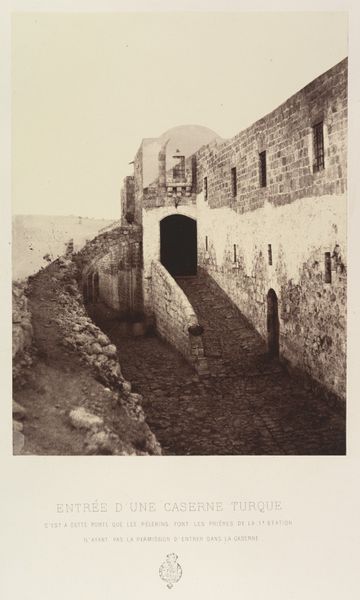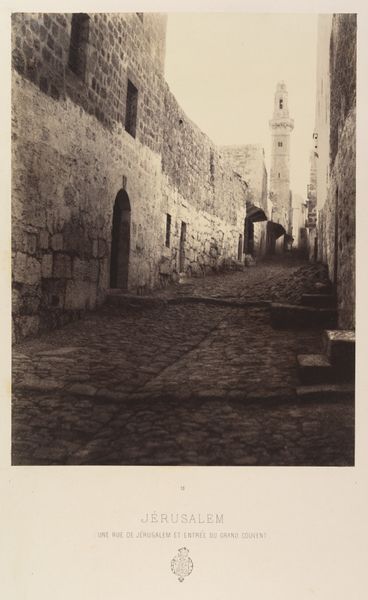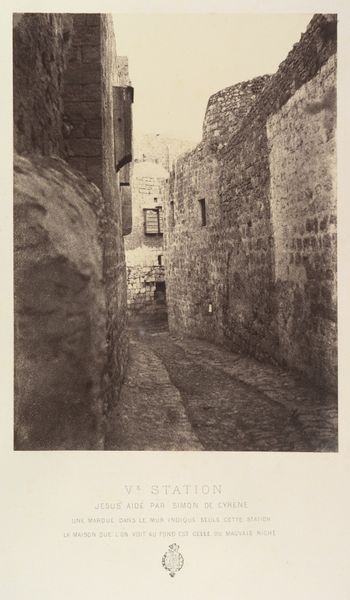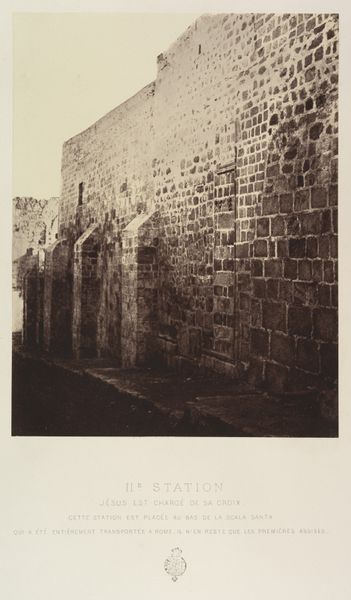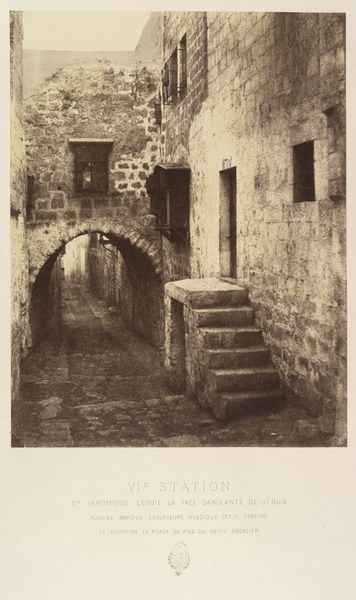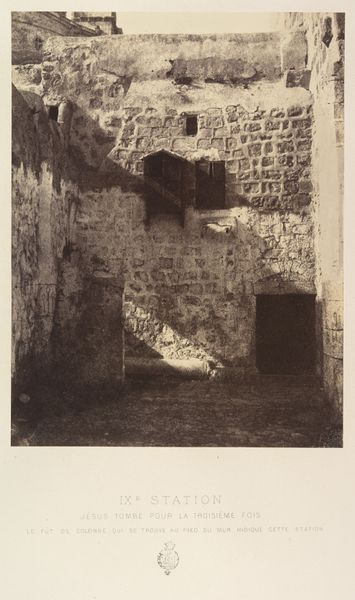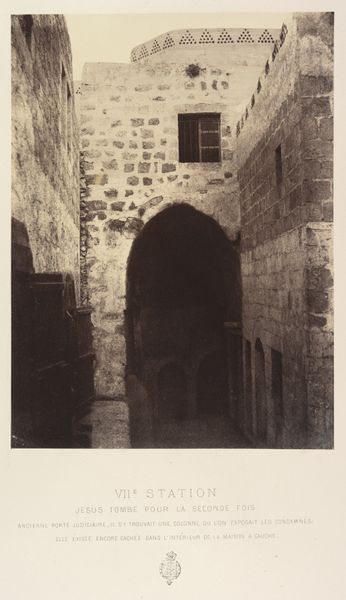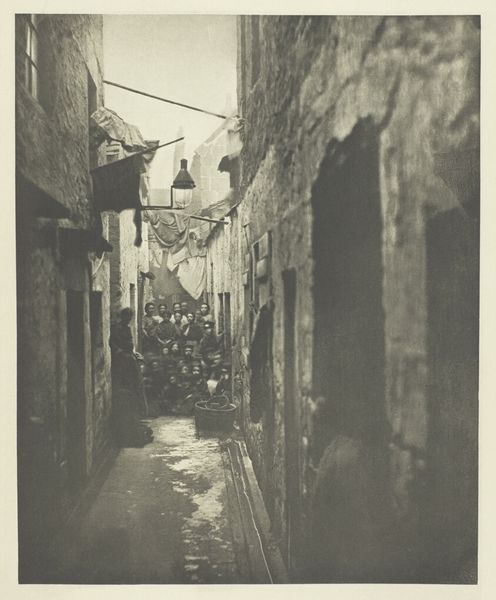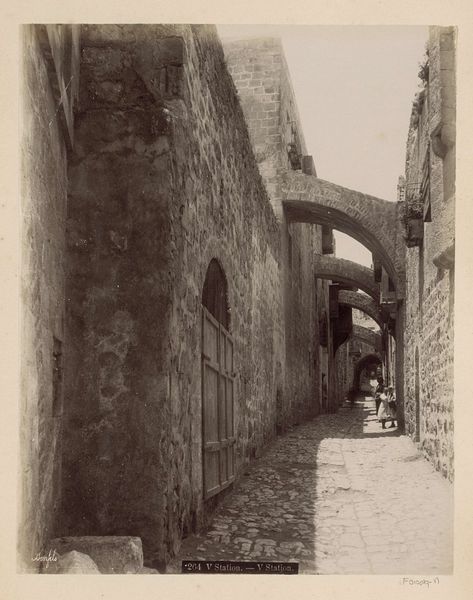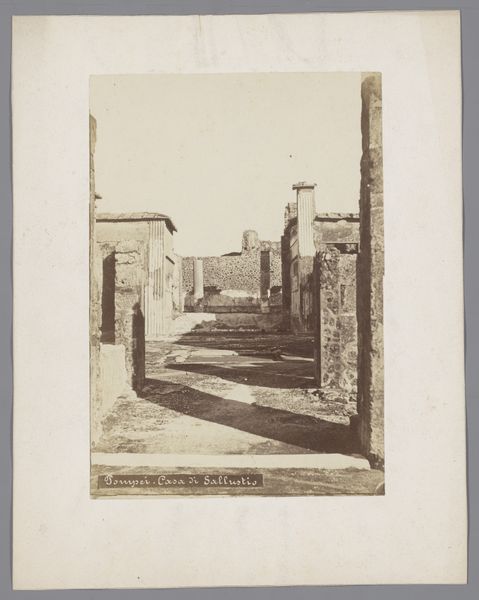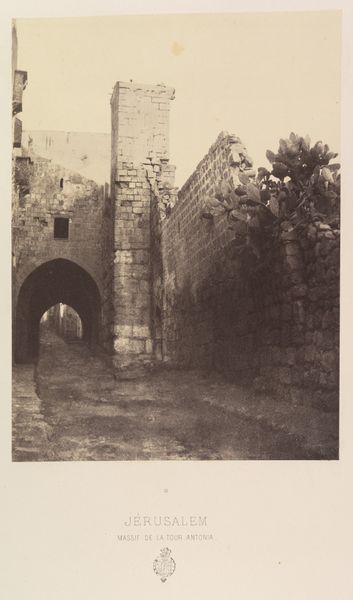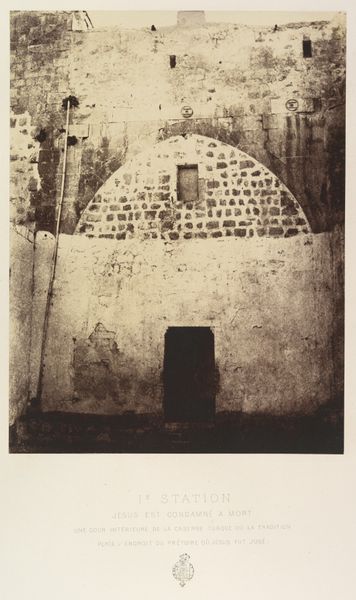
VIIIe Station. Jésus console les filles de Jérusalem. Ici encore une simple marque faite sur le fut d'une colonne encastrée dans le mur indique la station. 1860
0:00
0:00
photography, gelatin-silver-print, architecture
#
landscape
#
photography
#
orientalism
#
gelatin-silver-print
#
cityscape
#
architecture
Dimensions: Image: 10 13/16 × 8 7/16 in. (27.5 × 21.5 cm) Mount: 17 15/16 × 23 1/4 in. (45.5 × 59 cm)
Copyright: Public Domain
Curator: This gelatin-silver print, created around 1860 by Louis de Clercq, depicts the VIIIe Station of the Cross in Jerusalem, specifically referencing Jesus consoling the daughters of Jerusalem. Editor: The narrow street is striking; it’s walled in by these massive, uneven stones. It looks desolate, almost claustrophobic. I wonder how the materiality of those stones impacted the original inhabitants. Curator: The choice of photography itself is crucial. In the mid-19th century, documenting holy sites like this contributed significantly to both the orientalist and religious narratives of the time. Consider the socio-political function: these images served as powerful records for European audiences. Editor: Precisely. The gelatine-silver process allowed for detailed replication, disseminating this particular perspective of Jerusalem far and wide. It's important to question how the materials and method served as a filter shaping perceptions. We can see how architecture dictated movement, but also what it provided. Curator: Absolutely, and note the stark contrast. While the photo promises to show a place of spiritual significance, it highlights the everyday urban texture—the uneven paving, the looming stone work. It pulls back the romantic ideal often associated with such a site. This almost documentary approach would affect how it will be read, and in turn how society treats it. Editor: It's the labor involved that also interests me, too—the unseen work of quarrying, transporting, and fitting these stones. Each one tells a story, far from some divine romanticisation. What this shot seems to capture, instead, is an enduring aspect of material conditions, far away from what seems ethereal or idealized in the same space. It prompts viewers to consider how different ways of life impacted those involved with all of the materials here. Curator: You're right to stress the conditions and effort! De Clercq's work gives insight not only into what these places looked like then, but also offers insights into societal perceptions of religion and empire through that choice of recording media. Editor: I am happy to know these elements continue to endure in history, allowing for us to ask all of these complex questions.
Comments
No comments
Be the first to comment and join the conversation on the ultimate creative platform.
